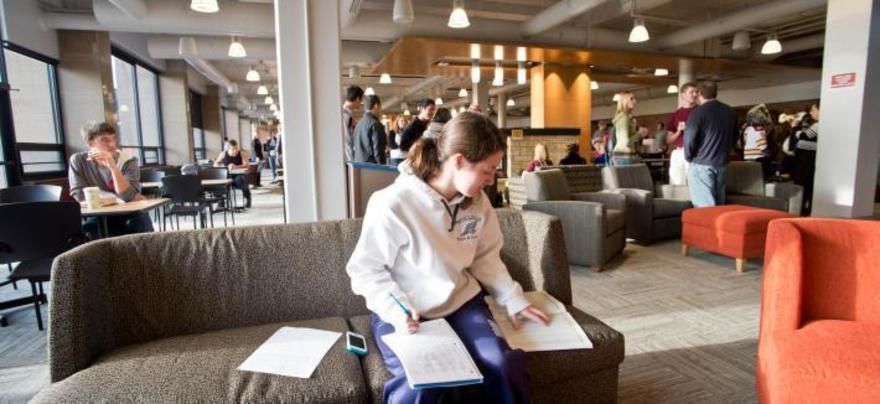
The Kirby Student Center Lounge was renovated during the summers of 2013 (Phase I) and 2015 (Phase II). While it did not undergo LEED certification, the renovation project used many industry best practices, including LEED standards, and took sustainability into special consideration.
The most sustainable feature of the renovated space is that is was an existing space. By renovating an existing area, rather than building a new building, campus green area is preserved, construction materials reduced, and less square-footage to maintain.
Waste Reduction
Special considerations were taken not only during the construction process, but also for how the space would be used once the renovations were complete. Excluding the hazardous materials that were disposed of specially, nearly all of the removed materials were either recycled or reused, eliminating 11.63 tons of landfill waste. This included the salvage and reuse of over 3,000 bricks!
We also focused on waste reduction for the users of the new space, by including recycling and compost receptacles throughout the space. These bins are made from recycled milk containers, which not only illustrates the complete recycling cycle, but also encourages students, staff, faculty, and visitors to properly sort their waste.
Eco-Friendly Products
Products and materials were selected specifically to be both locally-sourced, which reduces shipping emissions, and to be environmentally-friendly in general. The red birch, black granite, and Kasota stone were all locally sourced from Minnesota. In addition to these construction materials, products used, such as the compost/recycling bins, and LED light fixtures, also support UMD’s sustainable efforts.
Energy Considerations
Energy conservation was a primary focus during renovation. The new space is equipped with state-of-the-art LED light fixtures that utilize the latest surface-mount diode technology. These lights use 90% less power than the equivalent incandescent light bulb and have a vastly reduced heat output. The LEDs were also selected for their warm color, which improves the visual feel of the space. LEDs also last much longer than even fluorescent fixtures, which reduces maintenance costs.
In addition to the lights, an advanced control system controls energy use when the space is unoccupied to help lower unnecessary operating costs.